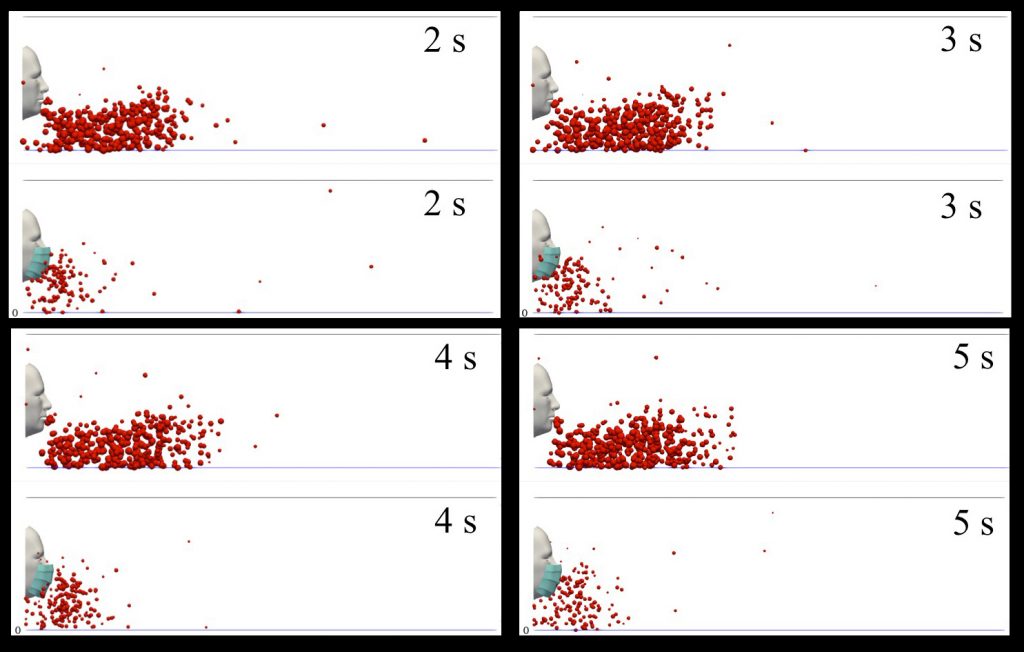WASHINGTON, June 16, 2020 — Face masks are thought to slow the spread of viruses, including the novel coronavirus that causes COVID-19, but little is known about how well they work.
In an issue of Physics of Fluids, by AIP Publishing, Talib Dbouk and Dimitris Drikakis, from the University of Nicosia in Cyprus, use precise computer models to map out the expected flow patterns of small droplets released when a mask-wearing person coughs repeatedly.
Previous work from this research group showed droplets of saliva can travel 18 feet in five seconds when an unmasked person coughs. This new work used an extended model to consider the effect of face masks and multiple cycles of coughing.
The results show masks can reduce airborne droplet transmission. However, the filtering efficiency of masks is adversely affected by repeated coughing, as might happen when an individual is ill. Repeated coughs reduce the efficiency, letting many more droplets through.

The model was created using complex mathematical equations for turbulence and other flow effects. A sequence of coughs was modeled by applying several cycles of forward-directed velocity pulses to the initial droplets. The researchers performed numerical simulations that account for droplet interactions with the porous filter in a surgical mask.
The results are alarming. Even when a mask is worn, some droplets can travel a considerable distance, up to 1 meter, during periods of mild coughing. Without a mask, droplets travel twice as far, however, so wearing a mask will help. A mask also decreases the number of droplets that leak out the side of the mask but fails to eliminate it entirely.
These calculations also revealed an effect on the droplet size due to turbulent flow encountering the mask, escaping and entering the environment.
“The droplet sizes change and fluctuate continuously during cough cycles as a result of several interactions with the mask and face,” said Drikakis.
Dbouk explained how droplet sizes might change. “Masks decrease the droplet accumulation during repeated cough cycles,” Dbouk said. “However, it remains unclear whether large droplets or small ones are more infectious.”
“The use of a mask will not provide complete protection,” Drikakis said. “Therefore, social distancing remains essential.” For health care workers, the investigators recommend much more complete personal protective equipment, including helmets with built-in air filters, face shields, disposable gowns and double sets of gloves.
The investigators also urge manufacturers and regulatory authorities to consider new criteria for assessing mask performance that account for flow physics and cough dynamics. They also proposed a new criterion for mask performance assessment.
###
For more information:
Larry Frum
media@aip.org
301-209-3090
Article Title
On respiratory droplets and face masks
Authors
Talib Dbouk and Dimitris Drikakis
Author Affiliations
University of Nicosia
